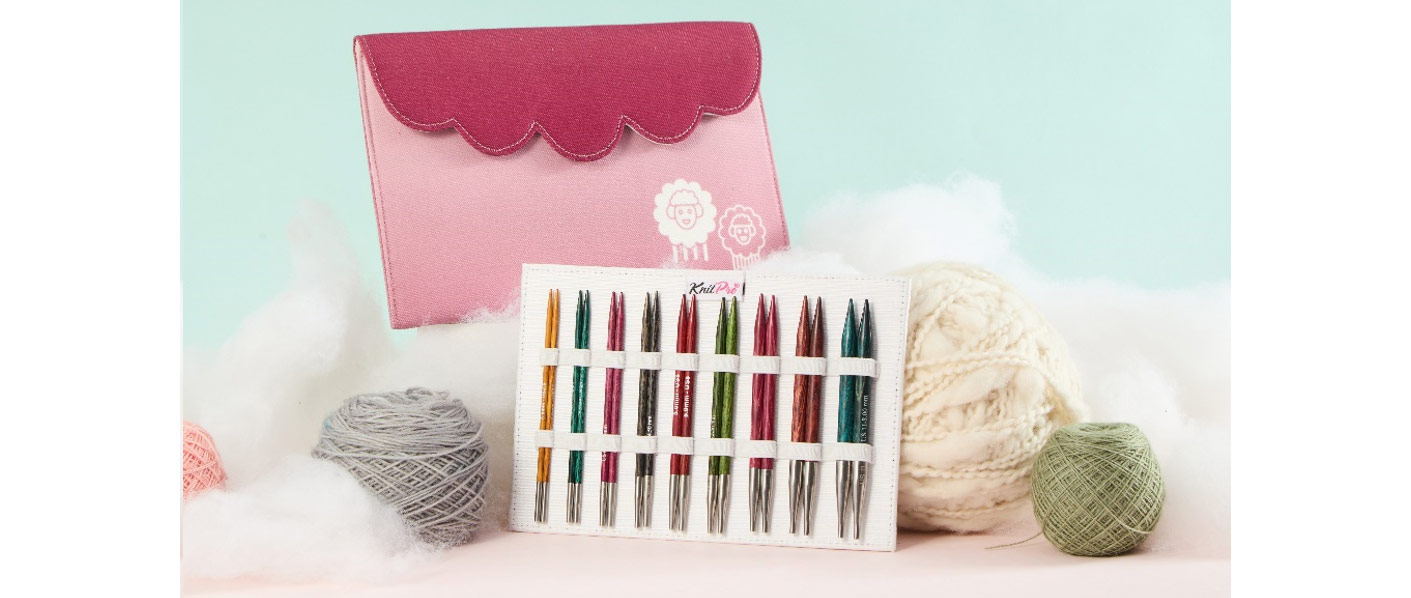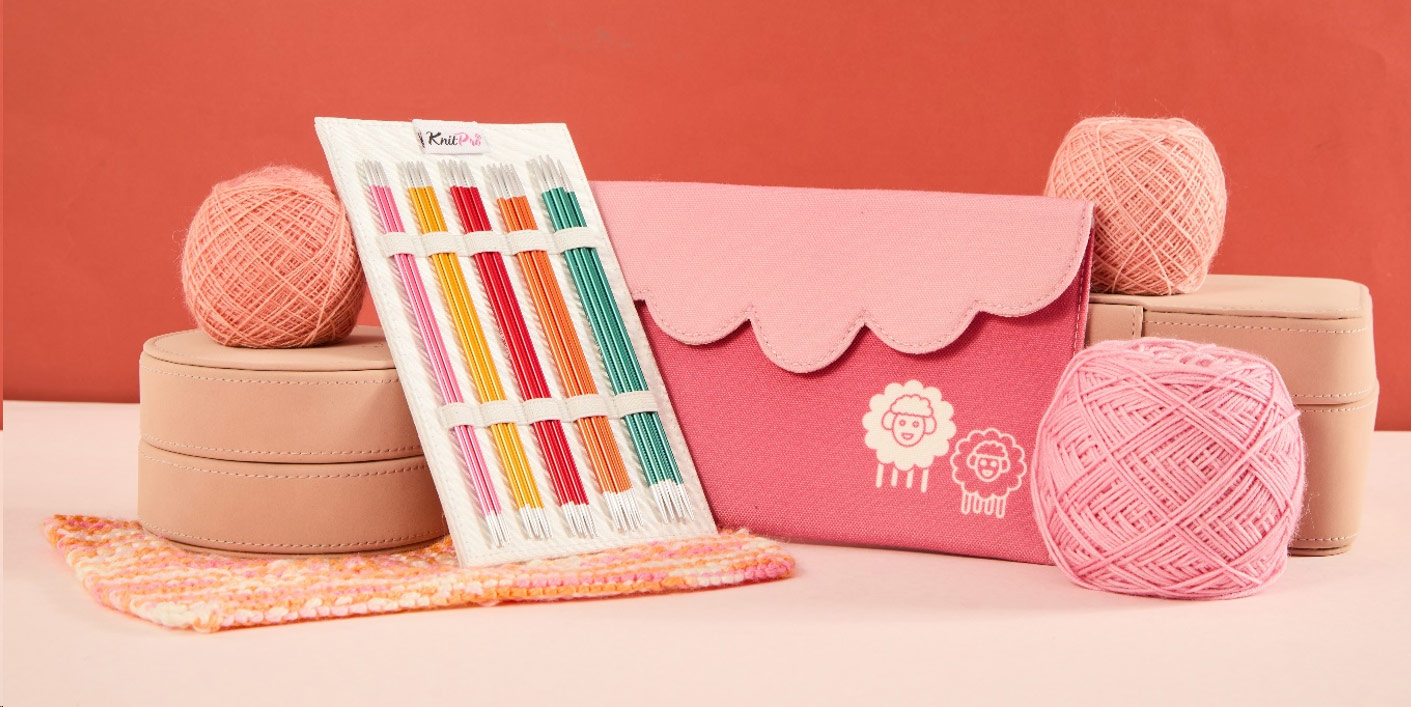Nothing comes close to the warmth of hand-knit item when it comes to cold weather of winters. With just your knitting needles it is possible to transform yarn into warm stitches. Whether you’re knitting a blanket, sweater, scarf, socks or hat, choosing the right stitch can make all the difference in warmth and texture. Well, the yarn has much to do about but the stitch structure can contribute beautifully. In this blog, we'll explore some of the warmest knit stitches ideal to keep out the cold. Get ready to add a cozy texture to your winter garments and accessories.
Before getting started, gather your supplies.
Knitting Needles – Choose knitting needles according to the yarn weight. The general rule is lightweight yarns with small knitting needle sizes while the heavy yarns with larger needle sizes. The size to proceed with your project is always mentioned on the pattern or suggested on the yarn label.
Choose single-pointed knitting needles for projects knit back and forth or circulars. For projects knit in the round, work with double-pointed needles or circulars according to the circumference of the project or length needed to work the magic loop smoothly.
Yarn – When you think of warmth, yarn plays a major role. But as we are talking about stitches you can choose a mid-weight yarn such as Dk or a worsted-weight. Fiber has a major weightage, therefore it's best to choose merino wool.
Knitting Accessories – Stitch markers, cables needles, repair hook, wool needles, scissors and measuring tape assist with all your knitting projects.
Most importantly the basic understanding of knit and purl stitches along with stretchy cast-on and bind-off methods are required.
1. Garter Stitch
The garter stitch is one of the simplest and yet the most versatile of stitches in knitting. The pattern is simple, and beginner-friendly as all you have to do is make all knit stitches every row. The dense, squishy fabric traps air and holds heat, making it perfect for winter knits. Our previous guide on how to knit garter stitch will guide you through. Similarly, you can also proceed with a reverse garter stitch pattern.
Best Projects: Scarves, hats, blankets, and cozy cardigans.
2. Brioche Stitch
The Brioche stitch pattern creates a deeply textured fabric that has a squishy, springy feel. The double-layered stitch is challenging but is well worth learning for its unbeatable warmth. The structure of the pattern traps a lot of warmth transferring to the wearer. If you are a beginner refer to our guide on knitting brioche stitch in easy steps.
Best Projects: Hats, scarves, cowls, and shawls. Also wonderful for oversized sweaters.
3. Fisherman’s Rib
Fisherman’s Rib creates a thick fabric using knit stitches worked into the row below. The stitch has great elasticity, allowing for flexibility and movement without sacrificing warmth. There’ 's a long history to its name as the pattern was mainly preferred by sea-faring fishermen who braved the cold and wet for livelihood.
Best Projects: Scarves, beanies, and oversized sweaters. It works for sleeves or necklines.
4. Double Knitting
Double knitting is a stitch technique that creates two layers of fabric simultaneously therefore two times warmer than other stitch patterns. To work on this reversible pattern, you can work with one single color or choose two shades for either side. In fact, you can experiment by adding visual elements to the warmth. Refer to our previous guide on double knitting for beginners.
Best Projects: Scarves, hats, and blankets. Sweaters and cardigans are challenging as you need twice the yarn plus it becomes difficult to manage while working on seamless projects.
5. Thermal Stitch
As its name suggests, the thermal stitch is designed with warmth in mind. It mimics the texture of thermal fabric, producing a squishy, dense knit that’s perfect for winter garments. The four-row repeat stitch pattern consists of alternating knit and purl stitches, creating a waffle-like texture that’s excellent for insulation.
Best Projects: Sweaters, mittens, blankets and hats.
6. Seed Stitch
Seed stitch is a classic textured stitch that alternates between knit and purl stitches in every row. It creates a pebbly, dense fabric with a beautiful texture that is warm and comfortable to wear. Besides trapping warmth effectively, the stitch pattern adds a lot of visual interest to a project, with its nubby texture adding both warmth and style. If you are new to knitting, check out our guide on how to knit seed stitch.
Best Projects: Blankets, hats, cowls, and scarves.
7. Ribbed Stitch Variations

Ribbing involves alternating columns of knit and purl stitches to create a stretchy, structured fabric. There are many variations of ribbed stitches, including 1x1, 2x2, and 3x3 ribs, each providing a different level of stretch and warmth. The stitch pattern is naturally thicker and more elastic, creating a snug fit that traps warmth close to the body.
Best Projects: Hat brims, sweater cuffs and high necklines, socks, and gloves.
8. Linen Stitch
Linen stitch is a textured stitch that resembles woven fabric. With alternating knit, purl and slipped stitches you can create a thick, firm fabric that’s perfect for providing warmth without being too bulky. The stitch is perfect for creating a smooth, durable fabric with great warmth.
Best Projects: Scarves, cowls, sweaters and even blankets.
9. Cable Stitches
Cables are a beloved knitting technique that creates raised, twisted designs in your fabric. While cable stitches add visual interest to your knitting, they also add thickness, making your project warmer. Refer to out blog on how to work cable knitting patterns.
Best Projects: Sweaters, scarves, hats, mittens, blankets and even home décor.
The right stitch in knitting can transform a simple garment into a cozy masterpiece you warm even on the coldest days. Whether you prefer the simplicity of garter stitch or the complexity of cables, get ready to experiment with different stitches all with your knitting needles.












